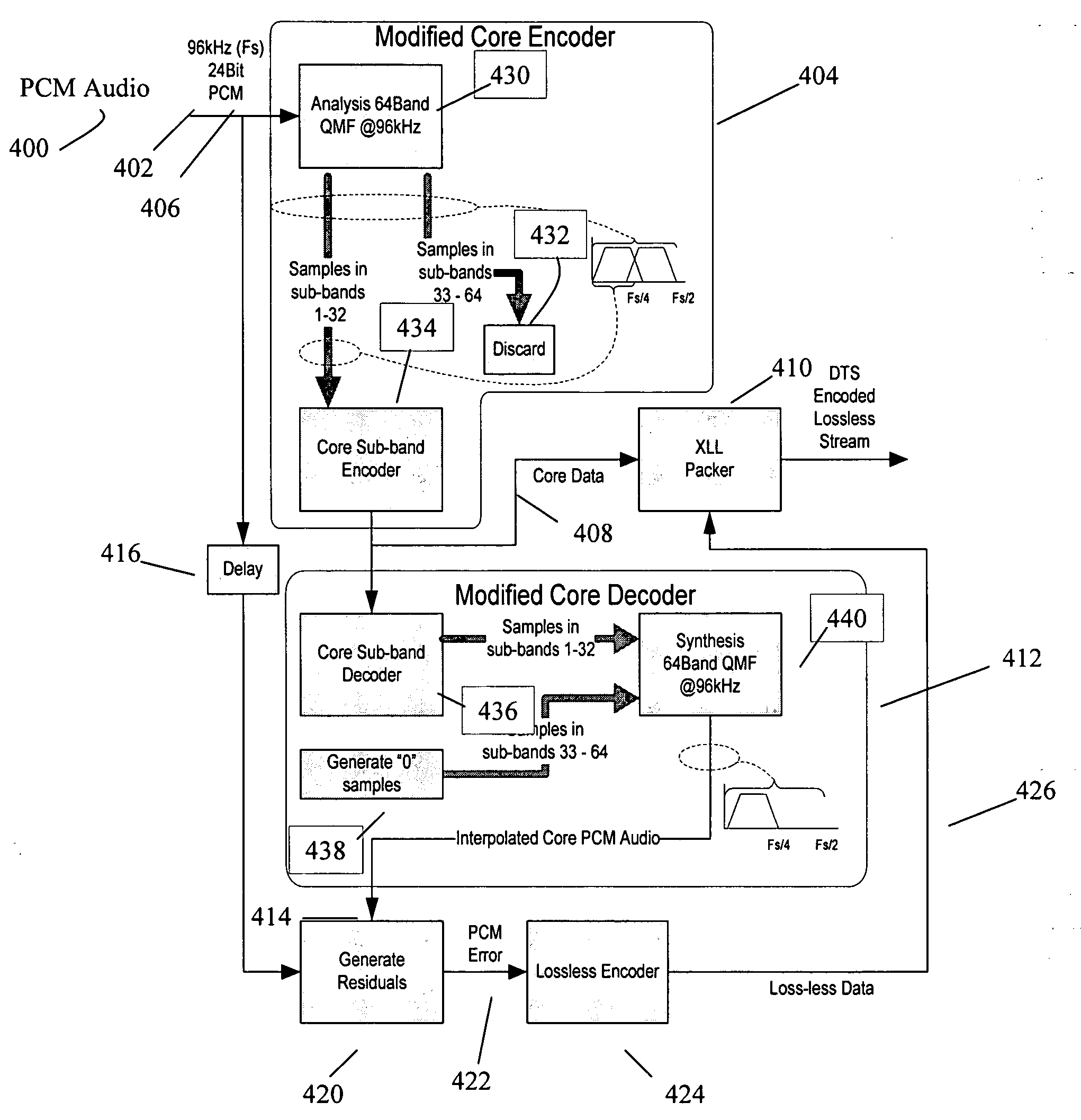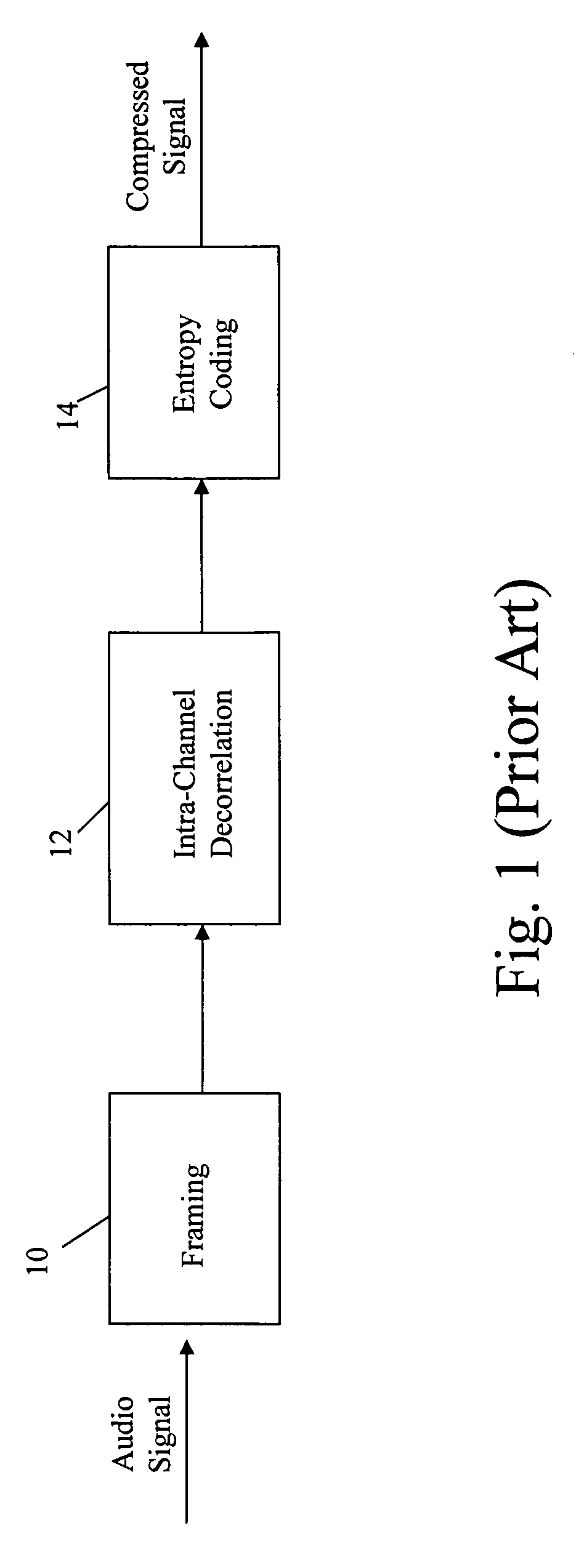Lossless multi-channel audio codec using adaptive segmentation with random access point (RAP) and multiple prediction parameter set (MPPS) capability
a multi-channel audio and codec technology, applied in multiplex communication, broadcast system receiving, instruments, etc., can solve the problems of lossy codecs, codecs typically require more bandwidth than lossy codecs, weak dependence, etc., and achieve the effect of mitigating transient effects
- Summary
- Abstract
- Description
- Claims
- Application Information
AI Technical Summary
Benefits of technology
Problems solved by technology
Method used
Image
Examples
Embodiment Construction
[0035]The present invention provides an adaptive segmentation algorithm that generates a lossless variable bit rate (VBR) bitstream with random access point (RAP) capability to initiate lossless decoding at a specified segment within a frame and / or multiple prediction parameter set (MPPS) capability partitioned to mitigate transient effects. The adaptive segmentation technique determines and fixes segment start points to ensure that boundary conditions imposed by desired RAPs and / or detected transients are met and selects a optimum segment duration in each frame to reduce encoded frame payload subject to an encoded segment payload constraint and the fixed segment start points. In general, the boundary constraints specify that a desired RAP or transient must lie within a certain number of analysis blocks of the start of a segment. The desired RAP can be plus or minus the number of analysis blocks from the segment start. The transient lies within the first number of analysis blocks of...
PUM
 Login to View More
Login to View More Abstract
Description
Claims
Application Information
 Login to View More
Login to View More - R&D
- Intellectual Property
- Life Sciences
- Materials
- Tech Scout
- Unparalleled Data Quality
- Higher Quality Content
- 60% Fewer Hallucinations
Browse by: Latest US Patents, China's latest patents, Technical Efficacy Thesaurus, Application Domain, Technology Topic, Popular Technical Reports.
© 2025 PatSnap. All rights reserved.Legal|Privacy policy|Modern Slavery Act Transparency Statement|Sitemap|About US| Contact US: help@patsnap.com



